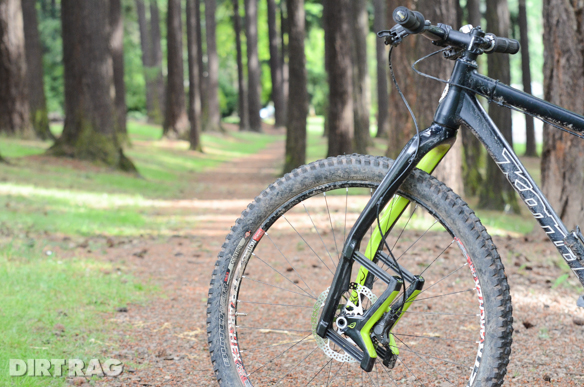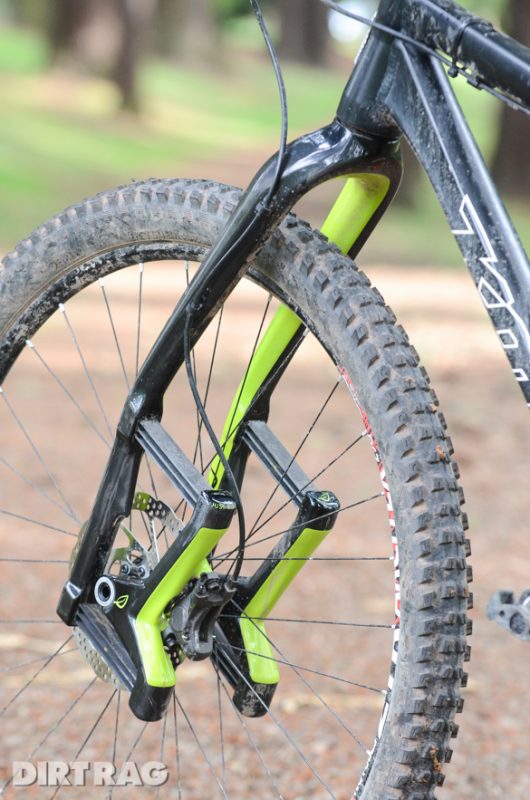First Impression: Lauf’s radical leaf-spring suspension fork
Originally posted on July 8, 2014 at 15:36 pm
I’ve always been drawn to unusual products and technologies. When the strangest gear shows up at Dirt Rag HQ I’m always first to raise my hand to try it. After all, that’s how cycling journalists like myself earn the big bucks. When I saw the Lauf forks at the Sea Otter expo I knew we had to get one in the pages of Dirt Rag.
Like countless great ideas, the genesis of the Lauf came over post-ride beers. The goal was to create the lightest possible racing suspension fork. Using the latest composite materials, the engineering team made it a reality, with the prototype winning its first race in June 2013.

Now, I’m not going to be winning any races any time soon, but I’ve been riding with a rigid carbon fork for a few years now, and the concept of the leaf spring Lauf didn’t seem so crazy to me. While it looks outrageous, the 60mm of suspension travel is accomplished by flexing the six composite leaf springs per leg.
The lack of moving parts means the complete fork weighed in at 1,039 grams with the Maxle and 1,010 grams with the bolt-on axle. That’s about a pound less than a high-end suspension fork. The downside is that there is no damping to the rebound or compression of those leaf springs though they do have a progressive spring curve, according to Lauf.


In addition to a rainbow of color options, there are two versions of the Lauf available, a regular version (above 143 pounds) and a “light” for lighter riders (under 154 pounds). The Lauf is available now direct to consumers from laufforks.com for $1,055 with DHL international shipping.
Installation was straightforward, and while Lauf sent us a fork with a 15mm Maxle, they also sent over the bolt-on thru-axle of its own design, which is simpler and lighter. Lauf forks will ship with this axle moving forward.

The first ride was surprising. Surprising in that it just felt… kind of normal. Mounted on my singlespeed, it was perfectly suited to the fast, rolling and buffed Allegrippis Trails at Raystown Lake, Pennsylvania. I have not yet had an opportunity to push it hard through rock gardens, but Lauf is adamant that it is designed for fast XC racing and is not suited for rowdy trail riding.
There is an element of bounciness that takes a bit to adjust to, especially when pre-loading the fork to lift it over obstacles. The lack of damping means it will lift quite a bit more than you might be expecting. There is also a tradeoff in lateral stiffness, as the wheel can pitch side to side more than a normal fork.

Limitations aside I have been impressed with the Lauf for its intended purpose. It is certainly working for the racers too, with an impressive list of XC wins. Fernando Riveros took one to a seventh place finish in the Pro XC race at Sea Otter.
I’m going to continue riding it through the summer and testing its limits, so keep checking back in for my long-term review.